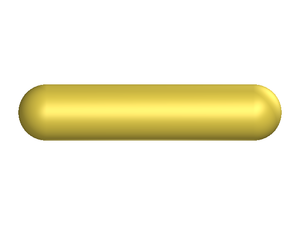Hard spherocylinders: Difference between revisions
| Line 27: | Line 27: | ||
*[http://dx.doi.org/10.1021/j100303a008 Daan Frenkel "Onsager's spherocylinders revisited", Journal of Physical Chemistry '''91''' pp. 4912-4916 (1987)] | *[http://dx.doi.org/10.1021/j100303a008 Daan Frenkel "Onsager's spherocylinders revisited", Journal of Physical Chemistry '''91''' pp. 4912-4916 (1987)] | ||
[[Category: Models]] | [[Category: Models]] | ||
*[http://dx.doi.org/10.1103/PhysRevLett.105.088302 Ran Ni, Simone Belli, René van Roij, and Marjolein Dijkstra | *[http://dx.doi.org/10.1103/PhysRevLett.98.09570 Alejandro Cuetos and Marjolein Dijkstra "Kinetic Pathways for the Isotropic-Nematic Phase Transition in a System of Colloidal Hard Rods: A Simulation Study", Physical Review Letters '''98''' 095701 (2007)] | ||
[[Category: Models]] | |||
*[http://dx.doi.org/10.1103/PhysRevLett.105.088302 Ran Ni, Simone Belli, René van Roij, and Marjolein Dijkstra "Glassy Dynamics, Spinodal Fluctuations, and the Kinetic Limit of Nucleation in Suspensions of Colloidal Hard Rods", Physical Review Letters '''105''' 088302 (2010)] | |||
[[Category: Models]] | [[Category: Models]] | ||
Revision as of 21:08, 27 April 2011

The hard spherocylinder model consists of an impenetrable cylinder, capped at both ends by hemispheres whose diameters are the same as the diameter of the cylinder. The hard spherocylinder model has been studied extensively because of its propensity to form both nematic and smectic liquid crystalline phases [1] as well as forming a plastic crystal phase for short [2] . One of the first studies of hard spherocylinders was undertaken by Cotter and Martire [3] using scaled-particle theory, and one of the first simulations was in the classic work of Jacques Vieillard-Baron [4]. In the limit of zero diameter the hard spherocylinder becomes a line segment, often known as the hard rod model, and in the limit one has the hard sphere model. A closely related model is that of the oblate hard spherocylinder.
Volume
The molecular volume of the spherocylinder is given by
where is the length of the cylindrical part of the spherocylinder and is the diameter.
Minimum distance
The minimum distance between two spherocylinders can be calculated using an algorithm published by Vega and Lago [5]. The source code can be found here. Such an algorithm is essential in, for example, a Monte Carlo simulation, in order to check for overlaps between two sites.
The original code did not give the symmetry property of the distance for almost parallel rods. The revised algorithm in C for systems with periodic boundary conditions can be found here.
Virial coefficients
- Main article: Hard spherocylinders: virial coefficients
Phase diagram
- Main aritcle: Phase diagram of the hard spherocylinder model
See also
References
- ↑ D. Frenkel, H. N. W. Lekkerkerker and A. Stroobants "Thermodynamic stability of a smectic phase in a system of hard rods", Nature 332 p. 822 (1988)
- ↑ C. Vega and P. A. Monson "Plastic crystal phases of hard dumbbells and hard spherocylinders", Journal of Chemical Physics 107 pp. 2696-2697 (1997)
- ↑ Martha A. Cotter and Daniel E. Martire "Statistical Mechanics of Rodlike Particles. II. A Scaled Particle Investigation of the Aligned to Isotropic Transition in a Fluid of Rigid Spherocylinders", Journal of Chemical Physics 52 pp. 1909-1919 (1970)
- ↑ Jacques Vieillard-Baron "The equation of state of a system of hard spherocylinders", Molecular Physics 28 pp. 809-818 (1974)
- ↑ Carlos Vega and Santiago Lago "A fast algorithm to evaluate the shortest distance between rods", Computers & Chemistry 18 pp. 55-59 (1994)
Related reading
- Daan Frenkel "Onsager's spherocylinders revisited", Journal of Physical Chemistry 91 pp. 4912-4916 (1987)
- Alejandro Cuetos and Marjolein Dijkstra "Kinetic Pathways for the Isotropic-Nematic Phase Transition in a System of Colloidal Hard Rods: A Simulation Study", Physical Review Letters 98 095701 (2007)
- Ran Ni, Simone Belli, René van Roij, and Marjolein Dijkstra "Glassy Dynamics, Spinodal Fluctuations, and the Kinetic Limit of Nucleation in Suspensions of Colloidal Hard Rods", Physical Review Letters 105 088302 (2010)



